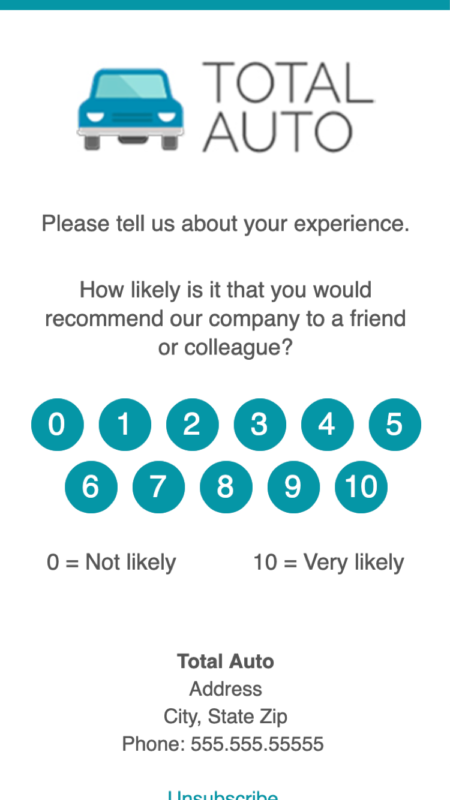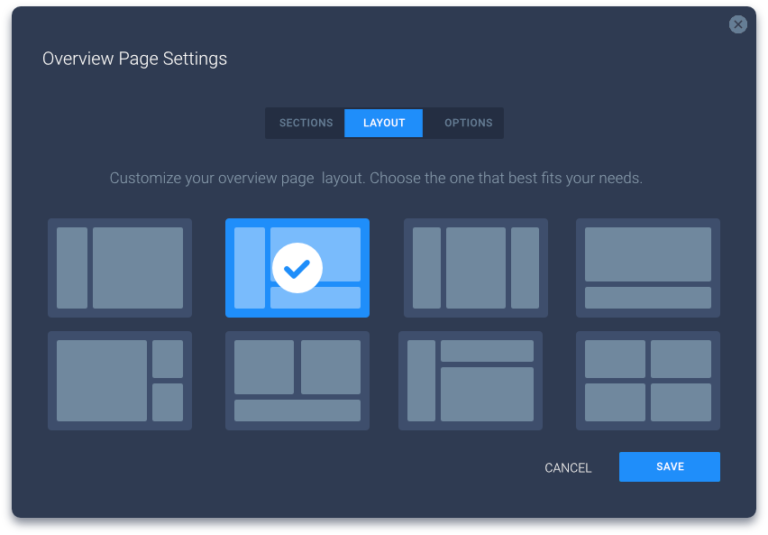Satisfied customers are vital for any successful business. To have happy customers you need to first understand what they want and need from your business.
How do you know whether your customers are satisfied? You need to ask them!
An effective customer satisfaction survey is key for finding out what your customers really think about your brand.
But the catch is that customer satisfaction surveys are only helpful when you ask the right questions, include the right number of questions, and promote them to your customers at the optimal moment. For that reason, creating and promoting a successful customer satisfaction survey is no easy task.
In this blog, we’ll look at some effective techniques for making the most of your customer satisfaction surveys.
What Is a Customer Satisfaction Survey?
Customer satisfaction surveys are used to understand how your customers feel about your brand’s offering or a certain experience with your business. A CSAT or customer satisfaction score is a simple measure of how happy or unhappy your customers were with a service, product, or interaction with a team member.

Surveys come in a variety of forms and lengths, they could be 1 question or 20 – it’s up to the business.
Surveys are best used when you use them to:
- Evaluate your customer satisfaction scores over time
- Segment customers based on satisfaction scores
- Identify areas for improvement
- Develop new products/services
- Give employees feedback
Why Are Customer Satisfaction Surveys Important?
In today’s competitive landscape, customer satisfaction and brand loyalty are more important than ever. If customers have a poor experience with your brand, there’s nothing to stop them from going elsewhere.
Customers are also generally more vocal about negative experiences than positive ones. The average American consumer will tell 16 other people about a poor customer experience, and it takes a brand an average of 5 positive experiences to make up for one unresolved negative one.
For that reason, it’s essential to identify customer problems early on and make an attempt to resolve them before they take to Google and write a negative review.
Customer satisfaction surveys are important for:
- Identifying positives in your brand
- Showing customers that you care by providing a channel to listen to them
- Improving weaknesses
- Personalizing customer experience by reaching out to unhappy customers
- Differentiating your brand from competitors
- Finding positive feedback to use as success stories to build a strong brand image
Tap into Customer Sentiment
Research shows that 50% of customer experience is based on emotion. If you want to develop meaningful relationships and delight your customers, you’ll need to ignite powerful feelings of trust and confidence. These emotions then help your customers to feel loyal to your brand.
If you want to truly improve customer experience you’ll need to ensure your customers feel good about your brand.
The best way of keeping tabs on your customers’ sentiment? Customer satisfaction surveys.
Targeted survey questions can help you identify how your customer base feels about your business.
How Do You Create a Customer Satisfaction Survey?
User-friendly surveys with good design are essential if you want customers to invest time in completing them.
1. Make it Simple and Easy to Understand
Confusing or wordy language won’t encourage your customers to complete your survey. Make life easy for them by using simple language and clearly worded questions.
You don’t want your customers to second guess what your questions are getting at so ensure they’re specific to one subject at a time.
2. Keep it Brief
All insights from your customers are worth their weight in gold. But too many questions can hamper the completion rate. Long surveys can also encourage people to speed through the questions without giving any real thought to their answers.
So what’s the ideal number?
74% of customers prefer surveys with 5 questions or less.
Take the GatherUp customer satisfaction surveys, with a maximum of 4 questions they are much more likely to be completed. When you provide a mix of open-ended questions and yes/no questions, you should find that 4 questions cover sufficient ground without taking too much of your customers’ time.
3. Know Your Goals
Before you write any questions, think about the goal of your survey and what you’re hoping to achieve.
Without a goal in mind, it can be too easy to ask loads of questions just for the sake of it. Your survey could then become too long.
Hone in on specifics. Do you want to find out if customers like your new door to door delivery service or do you want to understand why your team keeps receiving complaints about the cleanliness of your store?
4. Write a Mix of Question Types
For best results, we recommend including both closed-ended and open-ended questions.
Closed-ended questions are ones that you answer yes or no to, rate on a scale (like the Net Promoter Score 0-10 scale), or choose from a list of limited options. These types of questions are useful for comparing responses and pulling data-driven insights.
Following analysis, you may determine that 70% of your customers are satisfied with your new delivery service and that 30% had a poor experience.
It’s also helpful to include more open-ended questions that invite customers to share their opinion. These questions are great for obtaining more information about subjects you weren’t aware of or didn’t have time to ask about.
5. Promote Your Survey to Customers
Choosing the right moment for sending your survey out to customers is vital for high completion rates.
The optimal moment for sending out your customer satisfaction survey comes down to a few factors related to the type of products or services you offer and your customers.
You’ll want to base your decision to send out a survey around the following factors:
- Your ability to collect customer info to send a request
- The length of time spent at the establishment
- The timing of the customer service interaction
- How frequently the customer visits the business
If you run a hotel, you may want to send out a brief survey asking how respondents felt about the booking process right after someone books a night. You could then send out a slightly longer survey a few days following their stay in the hotel.
Alternatively, if you run a lawyer’s office and have long-term clients, you could send out a survey every 6-12 months. Your questions could focus on their overall satisfaction with the service, where they’d like to see some improvement, and if they’d be likely to recommend you to a friend.
6. Include an Option to Follow Up
If you want to dig deeper into your customers’ honest thoughts on where your business could improve, you could ask your customers if they’d be up for answering more questions.
Following three brief questions, your final question could ask them if they’d be open to answering more questions.
While not everyone will say yes, a few customers may relish the chance to give you more detailed feedback which ultimately equals more powerful insights for your business.
This way you’re not risking harming your completion rate and those customers who are generally invested in your business’s future can offer more of their opinion.
20 Recommended Questions to Include in Your Customer Satisfaction Survey
Including a range of different questions will help you achieve the best results with your customer satisfaction survey. Keep in mind that different survey types and questions are best suited to different points in the customer’s journey.
Take a look at these different survey types and recommended questions.
Customer Satisfaction Score (CSAT)
CSAT style surveys contain simple questions that ask customers to choose from several options. These could be yes/no questions or you could use emojis to add a bit of personality. CSAT surveys are best sent right after a purchase or an interaction.
1. How happy were you with today’s service?
? ? ?
2. How did you rate the service quality of Paul’s Plumbing today?
3. How would you rate the overall quality of Gregg’s Green and Fresh Veg Box?
4. How was your journey with John?
Net Promoter Score (NPS)
NPS surveys are helpful for finding out how likely your customers are to recommend your business to friends or colleagues – which is a great test for customer satisfaction.
Remember word of mouth recommendations are ultra-powerful for local businesses – according to Bain, a customer experience promoter has a lifetime value to a company that’s 600 to 1,400% that of a detractor.
5. How likely are you to recommend Smith & Partners to a friend or colleague?
1 = not likely at all 10 = Absolutely
6. How likely are you to return to Pizza Parlor?
Milestone
Milestone surveys are sent out at specific moments during the customer journey to understand customer experience. Depending on your business, you could send out a milestone survey following signup, purchase, or when a subscription is set to expire.
7. What’s your favorite product that Joe’s Juice Bar makes?
- Love the takeaway cold-pressed juices
- Prefer the made to order smoothies
- Obsessed with the coffee
- Other (leave a blank space).
8. How happy are you with your subscription to Cali Crossfit?
9. How would you rate today’s wait time?
10. What would persuade you to visit us more often?
11. How could we improve your experience with our waiting room?
12. What other products should we offer at Ranch Groceries?
13. How could we improve the quality of our show home visits?
14. Do you have any other comments about your recent visit to Calm Wellness Spa?
Customer Effort Score
Customer effort score surveys gauge the effort it takes for customers to use your product or service or solve a problem. It’s a good indication of how effective your business is at achieving its principal aims and understanding any blockers your customers are facing.
These questions could either contain multiple choice questions and have a dropdown of answers for customers to choose from or you could make them open-ended and invite customers to share suggestions.
15. Did you find what you were looking for at Sam’s Superfoods?
- Yes, everything and more
- Just about
- No, I couldn’t find the product I wanted
16. On a scale of 1-5, how well did we solve your problem today?
17. What stopped you from signing up at Yoga Hot Bar today?
18. Did we answer all your questions today?
19. How far did you travel today?
20. How would you rate your experience obtaining a construction quote?
How Can You Use the Results of a Customer Satisfaction Survey to Improve Your Business
Once you’ve gone to the trouble of creating, promoting, and gathering the results from a customer satisfaction survey it’s important to know how to use the results to boost your business.
1. Understand Your Market
Customers’ responses tell you something about how you’re performing in your market space. If customers will happily recommend your service, you can be sure that your target market is happy with what you’re offering.
You can draw conclusions on what service or interactions your customers prioritize and build a better understanding of the marketplace.
2. Validate or Change Your Product/Service Offering
Tailoring your survey questions around specific product or service offerings will help you validate which products or services your customers love and which ones require improvements.
Open-ended questions are great for encouraging customers to honestly share where they’d like to see improvements. Some ultra-insightful responses may even help you identify some gaps in your offering which you can use to innovate future products and services.
3. Show You Care and Develop Customer Relationships
Customers love it when they feel a brand is truly invested in customer experience. By regularly interacting with your customers and showing that their opinions matter to your business, you’ll help develop long-term loyal relationships with customers.
4. Increase Employee Engagement
Customer satisfaction surveys are great starting points for providing employees with valuable feedback.
If you run a multi-location business, surveys will help you differentiate the strengths and weaknesses of each branch. For example, your beachside restaurant may have great service but the city center location may receive customer feedback that it’s dirty.
These comments will help you deliver targeted feedback to your employees and boost their engagement in your business.
Final Thoughts
Customer satisfaction surveys are a valuable resource for building all-important brand loyalty. When you build an effective survey and proactively work on its feedback, you can improve your service, product, and customer experience.
Make it a regular habit to check in on your customers and understand how they feel about your business. Test out a few of our question suggestions and see what valuable insights and data you can pull from your customers.




